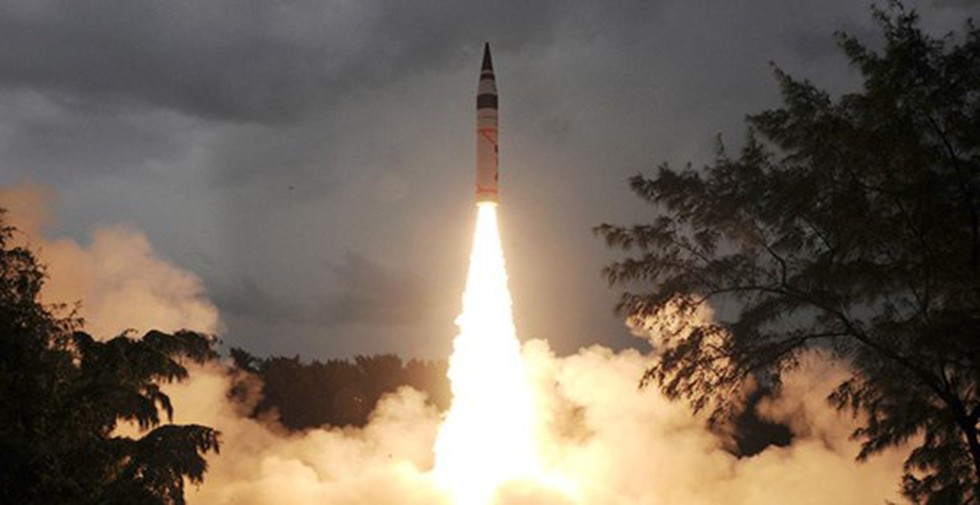
About Agni-1 Missile:
- Agni- 1 ballistic missile is a medium-Range Ballistic Missile having range 700–900 km.
- It is a single-stage, solid-fuel missile.
- It is capable of carrying a nuclear warhead with an estimated payload of 1,000 kg.
- The latest upgrade to the Agni-1 missile includes a new guidance system that makes it more accurate and a new warhead that increases its destructive power.
- It is road-mobile, which gives it a high degree of mobility and makes it difficult for an enemy to target.
- It was first test-fired in 2002.
- The Indian Army’s Strategic Forces Command first deployed this missile in 2007.
- The Agni-I originated from India’s 1983 Integrated Guided Missile Development Program (IGMDP).
About IGMDP:
- It was a programme for the R&D of the comprehensive range of missiles in India, started in 1982–83 under the leadership of Dr. APJ Abdul Kalam.
- It was a Ministry of Defence programme managed by the Defence Research and Development Organisation (DRDO).
- Types of missiles under the programme: APJ Abdul Kalam started multiple projects simultaneously to develop the following types of Indian Guided Missiles -
- Short Range Surface to Surface Missile (SSM) ‘Prithvi’
- Long Range Surface to Surface Missile (SSM) ‘Agni’
- Medium Range Surface to Air Missile (SAM) ‘Akash’
- Short Range Surface to Air Missile (SAM) ‘Trishul’
- Anti-tank Guided Missile (ATGM) ‘Nag’
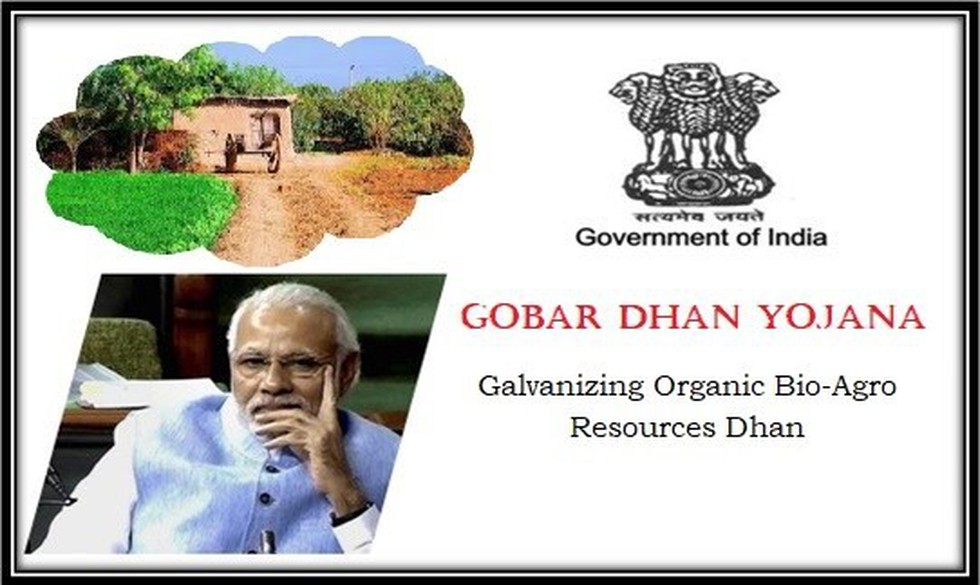
About Unified Registration Portal:
- This portal will serve as a centralized repository for assessing investment and participation in the Biogas/CBG (Compressed Biogas) sector at a pan India level.
- Primary objective: To streamline the process of setting up CBG/Biogas plants in the country.
- The Unified Registration Portal allows any government, cooperative or private entity operating or intending to set up a Biogas/CBG/Bio-CNG plant in India to obtain a registration number by enrolling in the portal.
- This registration number will enable them to avail a multitude of benefits and support from the Ministries and Departments of the Government of India.
GOBARdhan Scheme:
- Galvanizing Organic Bio-Agro Resources Dhan, is a crucial umbrella initiative of the Government of India.
- The government launched the Gobardhan scheme in 2018 as a national priority project under the Swachh Bharat Mission Grameen-Phase II program.
- Aim:
- To generate wealth and energy by converting cattle dung, agricultural residue, and other organic waste into Biogas, CBG and bio-fertilizers.
- It adopts a whole-of-government approach and aims to convert waste into wealth, thereby promoting a circular economy.
- Nodal Ministry: The Department of Drinking Water and Sanitation, Ministry of Jal Shakti.
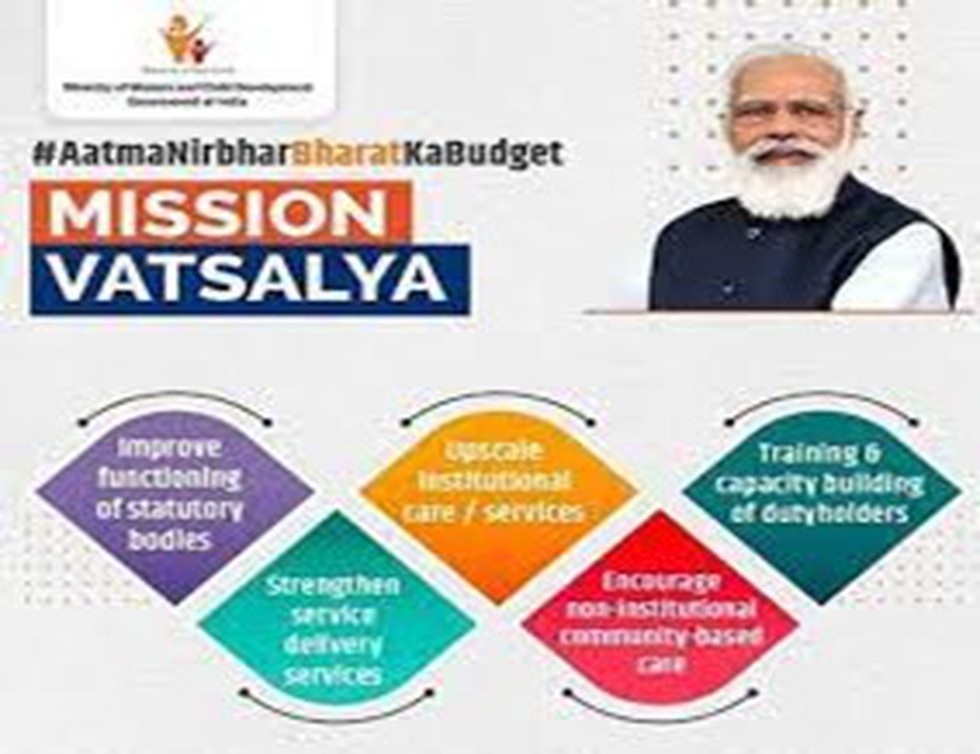
About Mission Vatsalya:
- Mission Vatsalya Scheme is a roadmap to achieve development and child protection priorities aligned with the Sustainable Development Goals (SDGs).
- It lays emphasis on child rights, advocacy and awareness along with strengthening of the juvenile justice care and protection system with the motto to 'leave no child behind'.
- Background:
- The Juvenile Justice (Care and Protection of Children) Act, 2015 provisions and the Protection of Children from Sexual Offences Act, 2012 form the basic framework for implementation of the Mission.
- Components under Mission Vatsalya: It include:
- Improve functioning of statutory bodies;
- Strengthen service delivery structures;
- Upscale institutional care/services;
- Encourage non-institutional community-based care;
- emergency outreach services;
- Training and capacity building.
- The Scheme is implemented as a Centrally Sponsored Scheme since 2021-22.
- Nodal Ministry: The Ministry of Women and Child Development.
About National Institute of Public Cooperation and Child Development (NIPCCD):
- It is an autonomous organisation with its Headquarters in New Delhi.
- It functions under the aegis of the Ministry of Women and Child Development.
- The objectives of the Institute are:
- To develop and promote voluntary action in social development.
- To take a comprehensive view of child development and develop and promote programmes in pursuance of the National Policy for Children.
- To develop measures for coordination of governmental and voluntary action in social development.
- To evolve a framework and perspective for organising children's programmes through governmental and voluntary efforts.
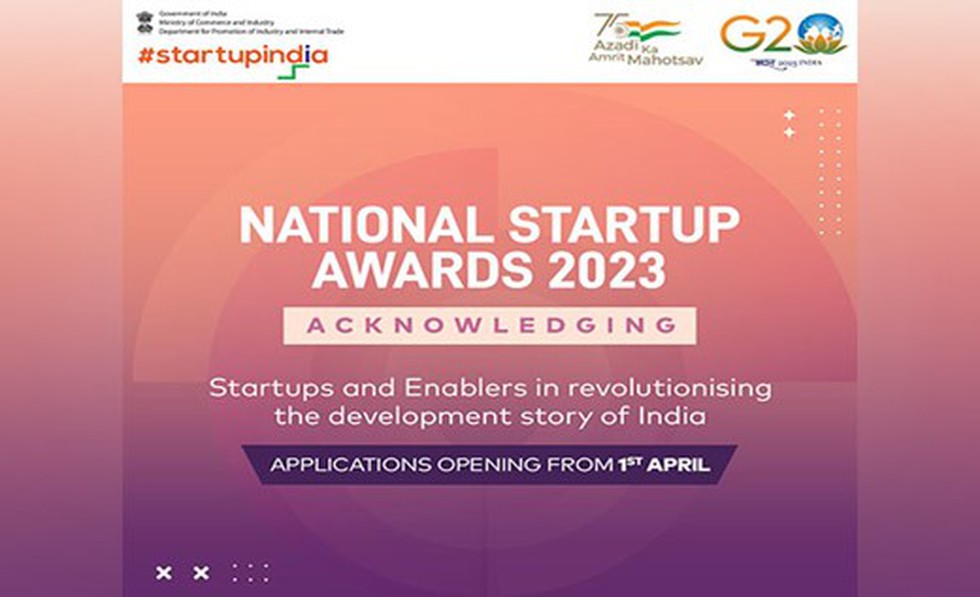
About National Startup Awards 2023:
- The National Startup Awards 2023 awards will focus on celebrating innovation from across the country, in line with Vision India @2047.
- DPIIT has invited applications across 20 different categories including aerospace, retail and emerging technologies etc.
- Aim: To reward and recognise outstanding startups and enablers in the ecosystem building innovative products and demonstrating measurable social impact.
Award: Cash prize of Rs 10 lakh to one winning startup in each category. - The Winners and finalists will also be given exclusive government support, including investor and government connect, mentorship, international market access, and corporate and unicorn connect.
- It was launched in 2020.
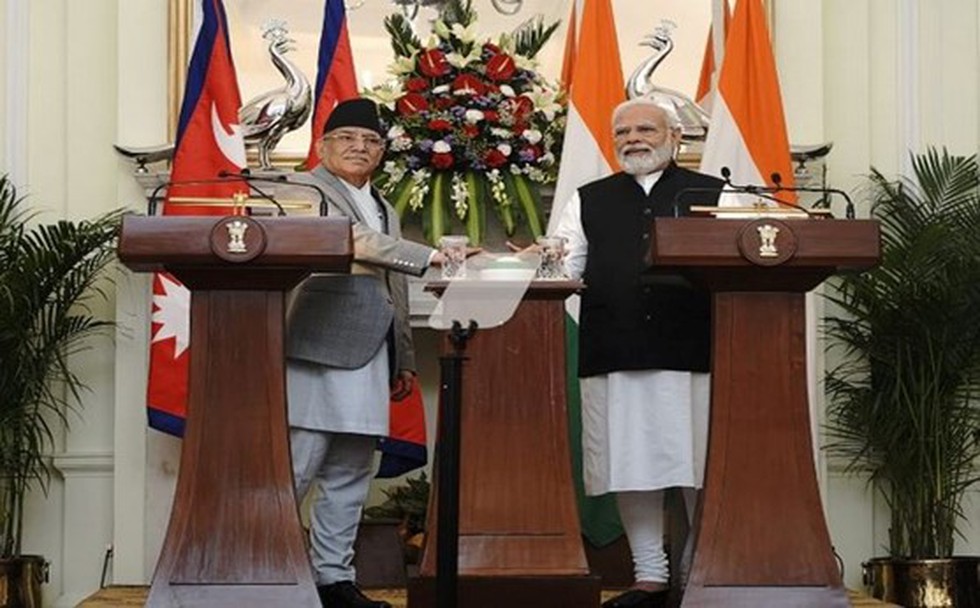
About Phukot Karnali Hydro Electric Project:
- It is located in Kalikot district, Karnali Province of Nepal.
- The project will use the flow from the Karnali River for power generation and the generated power will be fed into integrated power system of Nepal.
- Key features of the project:
- The installed capacity of the project shall be 480 MW with average annual generation of about 2448 GWh.
- 109 metre high RCC dam and an underground power house where the 06 turbines of 79 MW each shall be housed.
- To utilize minimum environmental release one Surface Power House of 6 MW capacity is also planned.
- This project is conceived as a Peaking Run-of-River (PRoR) type scheme.
Other Hydropower project betwwen India and Nepal:
- Pancheshwar Multipurpose Project: on Mahakali River.
- Lower Arun Hydroelectric Project : on Arun River (tributary of Koshi River)
About National Hydro Electric Power Corporation Private Limited (NHPC)
- NHPC Limited, a Schedule ‘A’ Enterprise of the Government of India with ‘MINI RATNA’ status, is a premier PSU in India for development of hydropower.
- It was incorporated in 1975 under Companies Act, 1956.
- The company is mandated to plan, promote and organize an integrated and efficient development of power in all its aspects through Conventional and Non-Conventional Sources in India and abroad.

About Chhatrapati Shivaji Maharaj:
- He was the founder of the Maratha Empire in western India.
- He was born on February 19, 1630 to Shahaji Bhosle and Jijabai in the fort of Shivneri, near the city of Junnar of the Pune district.
- With his valor and great administrative skills, Shivaji carved out an enclave from the declining Adilshahi sultanate of Bijapur. It eventually became the genesis of the Maratha Empire.
- He was known as the Father of Indian Navy, Shivaji was the first to realise the importance of having a naval force, and therefore he strategically established a navy and forts at the coastline to defend the Konkan side of Maharashtra.
- He was a secular ruler who was very accommodating of all religions. He had numerous Muslim soldiers in his army.
- Shivaji was a dependable supporter of women and their honour. Anyone under his rule caught violating woman's rights was severely punished.
- He had a council of ministers (Asht Pradhan)to advise him on the matters of the state but he was not bound by it.
- He was called as the 'Mountain Rat' and was widely known for his guerrilla warfare tactics. He was called so because of his awareness in geography of his land, and guerrilla tactics like raiding, ambushing and surprise attacks on his enemies.
Key facts about Raigad fort:
- Location:
- It is a hill fort situated in Raigad district, Maharashtra.
- It is situated in the Sahyadri mountain ranges or the western ghats.
- It is one of the strongest-ever fortresses of the Deccan Plateau and is known as the ‘Gibraltar of the East’ across the world.
- It was seized by Chhatrapati Shivaji Maharaj in 1656 from Chandraraoji More, the King of Jawali.
- Several structures and other constructions in Raigad were developed by Chhatrapati Shivaji Maharaj.
- He made this his capital in 1674, after being crowned as the king of the entire Maratha Kingdom and later on, the Maratha Empire.
- The fort was the location for an armed campaign executed by the British East India Company in 1765. On May 9, 1818, the fort was looted and subsequently destroyed by British forces.
- The fort also overlooks an artificial lake known as the ‘Ganga Sagar Lake’.
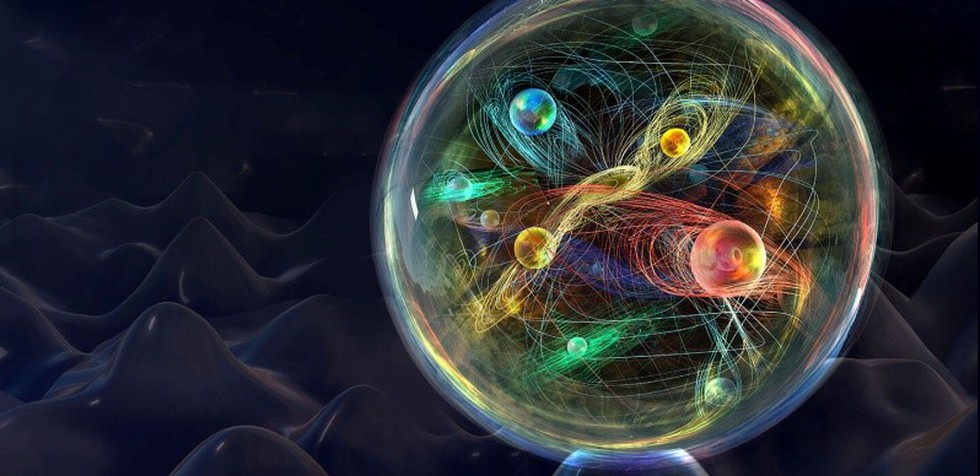
About Higgs boson:
- It is the fundamental force-carrying particle associated with the Higgs field, a field that gives mass to other fundamental particles such as electrons and quarks.
- It is one of the 17 elementary particles that make up the Standard Model of particle physics, which is scientists' best theory about the behaviors of the universe's most basic building blocks.
- Higgs boson plays such a fundamental role in subatomic physics that it is sometimes referred to as the "God particle."
- It was proposed in 1964 by Peter Higgs, François Englert, and four other theorists to explain why certain particles have mass.
- The particle was finally discovered on July 4, 2012, by researchers at the Large Hadron Collider (LHC).
- Features:
- The Higgs boson has a mass of 125 billion electron volts — meaning it is 130 times more massive than a proton , according to CERN.
- It is also chargeless with zero spin — a quantum mechanical equivalent to angular momentum.
- The Higgs Boson is the only elementary particle with no spin.
- Its a "force carrier" particle that comes into play when particles interact with each other, with a boson exchanged during this interaction.
Key facts about Large Hadron Collider (LHC):
- It is the world’s largest and most powerful particle accelerator.
- Location: Near Geneva, Switzerland; across the border of France and Switzerland.
- The LHC, built by the European Organisation for Nuclear Research (CERN), is on the energy frontier of physics research, conducting experiments with highly energised particles.
- The LHC can reproduce the conditions that existed within a billionth of a second of the Big Bang.
- The colossal accelerator allows scientists to collide high-energy subatomic particles in a controlled environment and observe the interactions.
- One of the most significant LHC breakthroughs came in 2012 with the discovery of the Higgs Boson.
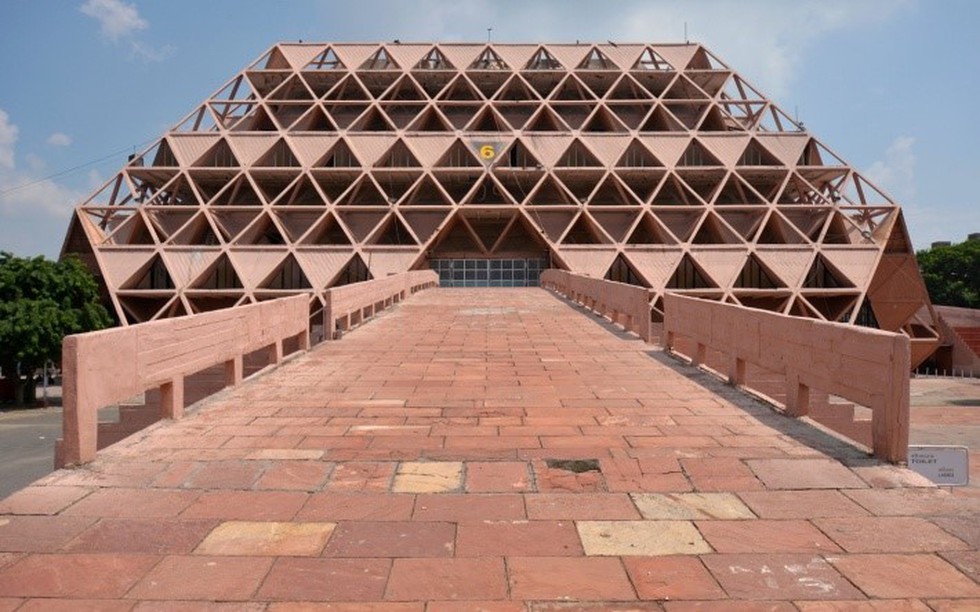
About Pragati Maidan:
- It is one of the biggest exhibition centers in India.
- Location: New Delhi.
- History:
- It was inaugurated on 3 November 1972 by then Prime Minister Indira Gandhi.
- The first show which took place here was the ASIA 72 TRADE SHOW – to celebrate 25 years of India’s Independence.
- It is owned, operated, controlled and managed by India Trade Promotion Organization (ITPO), the trade promotion agency of the Ministry of Commerce and Industry, Govt. of India.
- It hosts over 70 national and international exhibitions annually, with the largest being the India International Trade Fair.
- Features:
- It is a huge complex of buildings, covering over 150 acres (0.61 km2) sprinkled with many lawns, overlooking the historic Purana Qila.
- The complex houses many pavilions like the Nehru Pavilion, the Defence Pavilion, the Indira Pavilion, and the Son of India Pavilion.
- It also has an auditorium where rock shows and plays are held quite frequently.
- The complex houses 18 exhibition halls, several buildings, eateries, performance spaces and compounds, including headquarters of the India Trade Promotion Organisation (ITPO).
Key facts about Purana Qila:
- Location:
- It is located on the South Eastern part of the present city of New Delhi.
- It is one of the oldest forts in Delhi and built on the banks of river Yamuna.
- The present citadel at Purana Qila started its construction in the reign of Humayun and was completed by Sher Shah Suri (‘The Lion King’).
- The Qila was inspired by Jama Masjid, which was established 15 years before the reconstruction of Qila.
- Architecture:
- It is rectangular in shape and is spread over an area of 1.5 kilometers.
- Another amazing feature of the Purana Qila are the three gates that are a display of a happy blend of Hindu and Muslim styles of architecture. – Bara Darwaza or the Big Gate facing west, the Humayun Gate facing south, and the Talaqqi Gate, which is often referred to as the forbidden gate.
- All of the gates are double-storeyed and comprise of huge semi-circular bastions flanking either of their sides.
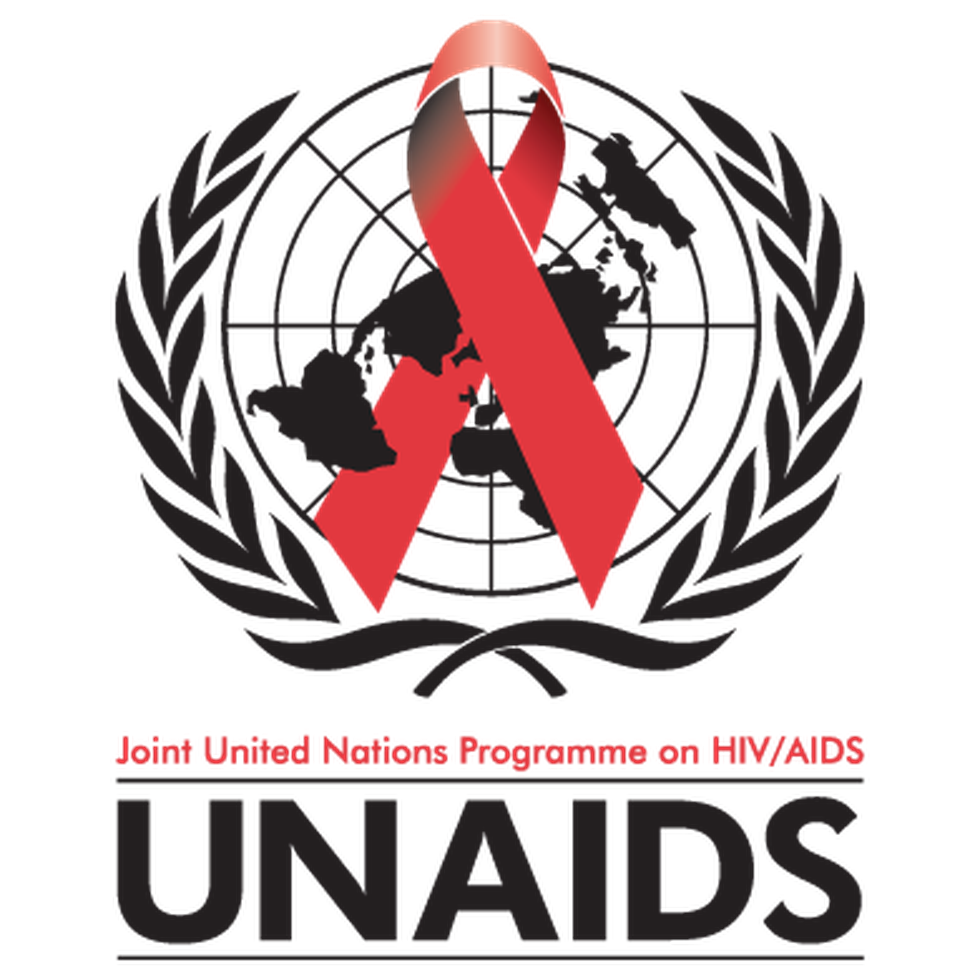
About Joint United Nations Programme on HIV/AIDS (UNAIDS):
- UNAIDS is an innovative joint venture of the United Nations family established in 1996, which brings together the efforts and resources of 11 UN system organizations to unite the world against AIDS.
- UNAIDS' global mission is to lead, strengthen and support an ample response to the HIV/AIDS epidemic in order to:
- Prevent the advance of HIV.
- Offer treatment and assistance to people infected and affected by the disease.
- Reduce individuals and communities vulnerability to HIV/AIDS.
- Mitigate the epidemic's socio-economic and human impacts.
- The participating organizations that form UNAIDS, also called the UNAIDS Cosponsors, are:
- UNHCR (United Nations High Commissioner for Refugees)
- UNICEF (United Nations Children’s Fund
- World Bank
- UNESCO (United Nations Educational, Scientific and Cultural Organization)
- UN Women (United Nations Entity for Gender Equality and the Empowerment of Women)
- UNDP (United Nations Development Programme)
- UNFPA (United Nations Populations Fund)
- WHO (World Health Organisation)
- World Food Programme
- UNODC (United Nations Office on Drugs and Crime)
- ILO (International Labour Organisation)
- The Joint Programme is coordinated by the UNAIDS Secretariat, headquartered in Geneva, Switzerland.
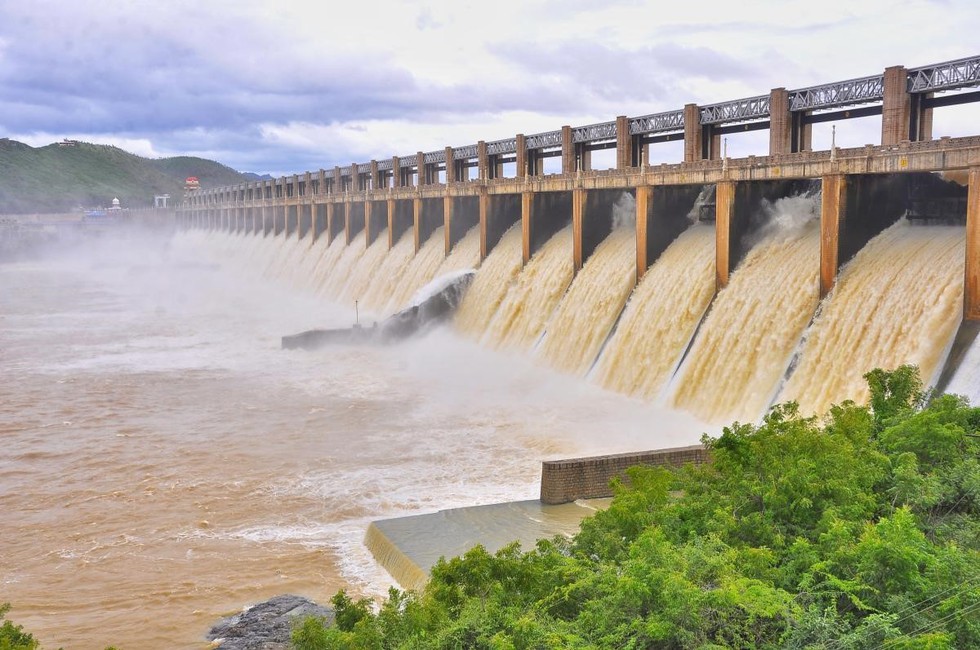
About Mettur Dam:
- It is one of the largest dams in India, built in 1934.
- Location:
- Mettur, Salem District, Tamil Nadu.
- It was constructed in a gorge where the Kaveri River enters the plains.
- It provides irrigation facilities to parts of Salem, the length of Erode, Namakkal, Karur, Tiruchirappali and Thanjavur districts for 271,000 acres (110,000 ha) of farmland.
- Features:
- The total length of the dam is 1700 m with a maximum level of 120 feet and a capacity of 93.4 tmc ft.
- The dam creates Stanley Reservoir.
- Set at the foot of the dam in 1937 is the Mettur hydroelectric and thermal power plant, with a hydro-power generation of 32 MW.
- There is a park adjoining the Dam on the opposite side with lawns and fountains, and also has the Muniappan/Aiyanar statue in the vicinity.
Key Facts about Kaveri River:
- Kaveri, also spelled Cauvery, is a sacred river of southern India. It is known as the Ganga of South India.
- Origin: It rises on Brahmagiri Hill of the Western Ghats in southwestern Karnataka state.
- It flows in a southeasterly direction for 765 km through the states of Karnataka and Tamil Nadu and descends the Eastern Ghats in a series of great falls.
- The Cauvery basin extends over the states of Tamil Nadu, Karnataka, Kerala and the Union Territory of Puducherry.
- The river drains into the Bay of Bengal at Poompuhar in the Mayiladuthurai district of Tamil Nadu.
- Major left bank tributaries: Harangi, the Hemavati, the Shimsha and the Arkavati.
- Major right bank tributaries: Lakshmantirtha, the Kabbani, the Suvarnavati, the Bhavani, the Noyil and the Amaravati


.jpg)

.jpg)
























































































































































.png)
.png)
.png)
.png)
.png)


.png)
.png)
.png)





.png)
.png)






.png)
.png)
.png)
.png)
.png)
.png)
.png)
.png)
.png)

.png)







.png)
.png)


.png)
.png)
.png)


.png)

.png)
.png)





.jpg)

.png)
.png)


.png)

.png)
.png)
.png)

.jpg)

.jpg)


.png)

.png)
.png)
.png)
.png)
.png)
.png)
.png)
.png)
.png)
.png)




.png)

.png)





.png)
.png)
.png)
.png)
.png)
.png)
.png)
.png)
.png)
.png)
.jpg)
.jpg)

.png)
.png)
.png)
.png)
.png)
.png)
.png)
.png)
.png)
.png)
.png)
.png)
.png)
.png)
.png)
.png)
.png)
.png)
.png)
.png)
.png)
.png)



.png)
.png)


.jpg)
.jpg)
.jpg)
.jpg)
.jpg)

.jpg)








.jpg)
.jpg)
.jpg)
.jpg)
.jpg)

















.jpg)
.jpg)







.jpg)


















.jpg)
.jpg)






























































































.jpg)
.jpg)


























.jpg)

.jpg)










.jpg)








.jpg)




.jpg)










.jpg)


















.jpg)












































.jpg)














.jpg)
.jpg)
.jpg)





.jpg)

.jpg)
.jpg)





































































.jpg)


































.jpg)
.jpg)
















































.jpg)












.jpg)


.jpg)




.jpg)
.jpg)
.jpg)

.jpg)
.jpg)
.jpg)
.jpg)

.jpg)
.jpg)
.jpg)

.jpg)
.jpg)
.jpg)
.jpg)
.jpg)
.jpg)
.jpg)
.jpg)

.jpg)


.jpg)
.jpg)
.jpg)
.jpg)
.jpg)
.jpg)
.jpg)
.jpg)
.jpg)
.jpg)











.jpg)
.jpg)





.jpg)
.jpg)
.jpg)
























.jpg)
























.jpg)









.jpg)
.jpg)







.jpg)
.jpg)









































.jpg)
.jpg)
.jpg)
.jpg)
.jpg)

.jpg)
.jpg)
.jpg)
.jpg)
.jpg)


.jpg)
.jpg)
.jpg)
.jpg)
.jpg)

.jpg)
.jpg)
.jpg)
.jpg)
.jpg)
.jpg)
.jpg)
.jpg)
.jpg)
.jpg)
.png)

.png)
.png)

.png)
.png)
.png)
.png)


.jpg)
.jpg)

.jpg)
.jpg)
.jpg)

.png)
.png)
.png)
.png)
.png)
.png)
.png)

.png)
.png)
.png)
.png)
.png)
.png)
.png)
.png)
.png)
.png)





































































-min.png)



.png)




.png)








































